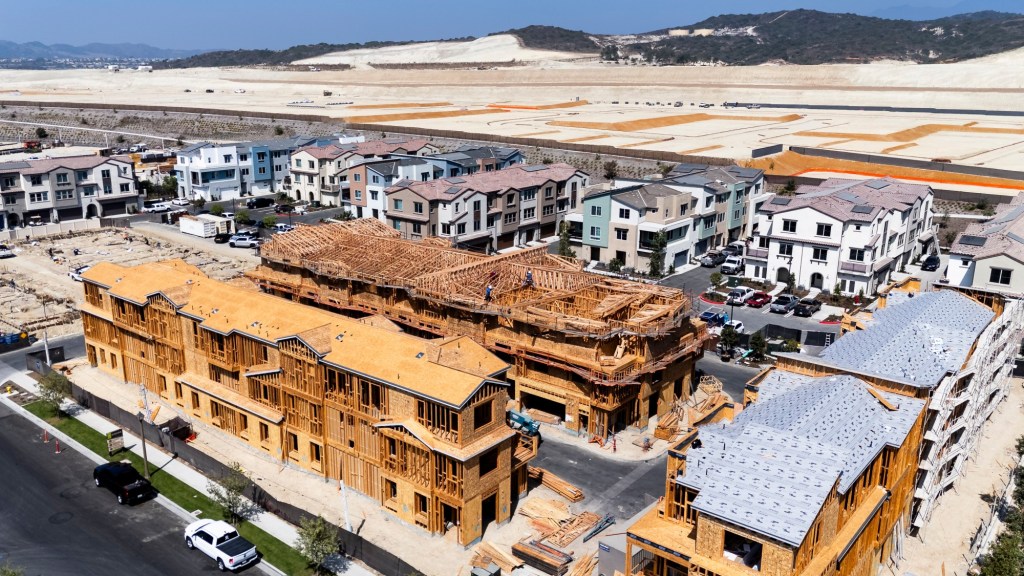Editor’s note: This is the sixth installment in a series examining the roots of America’s housing crisis. To read the earlier pieces, visit the roots of today’s housing crisis.
Over the past 50 years, the population of the United States has ballooned from 210 million to 340 million. And yet we are building far fewer homes than we were a half-century ago. In 1973, over two million homes and apartments were built compared to only 1.4 million in 2023. Economists estimate that nationally, we need five million more homes. And just to keep up with existing population trends, we need to build an additional two million homes per year. Since we’re not even close, more people are chasing fewer homes, and prices are going up, up, and further up.
It’s tough enough to find land zoned to allow affordable housing to be built. But even where zoning allows it, homes aren’t being built. The double-whammy of environmental regulations and environmental litigation has been destroying housing opportunities for a half-century.
In the early 1970s, a rising tide of environmental consciousness led Congress and state governments to pass an unprecedented number of environmental laws. Between the Clean Water Act, the Endangered Species Act, the National Environmental Protection Act, and a host of state analogs, builders have been saddled with a dizzying array of new laws and regulations.
Violations can lead to devastating fines and even jail time. What’s more, almost all these laws give NIMBY neighbors, environmental activists, and others the right to sue—sometimes repeatedly—to stop and slow down housing projects.
The impact is real. Hundreds of millions of acres of land in the United States have been taken off the table for housing through land set-asides, Kafkaesque permitting regimes, and the constant threat of litigation. Take Mike and Chantell Sackett, who tried to build a modest home on a small lot in Priest Lake, Idaho. When attempting to clear a small lot for their home, they were threatened by the EPA with $75,000 in fines per day because of a supposed wetland on their property. It took two trips to the Supreme Court, and 17 years of litigation hell, including two unanimous victories at the Supreme Court, for the Sacketts to beat back the EPA’s unlawful attempt to cow the couple into submission.
The Sacketts were lucky to have received pro bono legal assistance from the Pacific Legal Foundation, an organization dedicated to fighting government regulatory overreach. And although the Supreme Court ruled that the so-called wetlands on property like that owned by the Sacketts is not subject to federal control, tens of millions of acres remain subject to federal jurisdiction. And much more land is subject to onerous wetlands controls at the state level. What this means in practical terms is that it has become a regulatory nightmare to even attempt to build homes that state and federal regulators would rather not see built because of wetlands protection, endangered species, or other environmental concerns. Year after year, the cumulative impact of these policies is that hundreds of thousands of homes are never built.
And it’s not just homes on outlying lands targeted for environmental protection. With savvy NIMBY-inspired environmental litigation, houses don’t get built wherever neighbors object. One California study found that the vast majority of lawsuits to stop affordable and market-rate housing are filed to stop projects in more desirable neighborhoods. What this means is that new affordable housing never gets built, and working-class families never get the opportunity to move into neighborhoods with better schools and amenities. Jennifer Hernandez, who has studied and written extensively about this phenomenon, calls it “Green Jim Crow” because of its effect to maintain segregation in urban ghettos.
An environmental ethic that ignores the plight of human beings—especially those who have traditionally been marginalized by bad housing policies—is inherently unethical. This is not to say that environmental considerations should be ignored. Surely, they are of great importance. But instead of using environmental concerns as a bludgeon to stop housing, we should focus on how to build more homes in more areas, balancing both human and environmental values.
James Burling is vice president of legal affairs at Pacific Legal Foundation, a nonprofit legal organization that defends Americans’ individual liberty and constitutional rights. He is the author of “Nowhere to Live: The Hidden Story of America’s Housing Crisis.”
Originally Published: August 14, 2025 at 1:00 PM PDT
